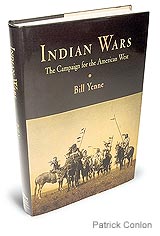(p. W11) The main problem with Indian reservations isn’t, as some argue, that they were established on worthless tracts of grassland. Consider the case of Buffalo County, S.D., which Census data reveal to be America’s poorest county. Some 2,000 people live there. More than 30% of the homes are headed by women without husbands. The median household income is less than $13,000. The unemployment rate is sky high.
Just to the east of Buffalo County lies Jerauld County, which is similar in size and population. Yet only 6% of its homes are headed by women without husbands, the median household income is more than $30,000, and the unemployment rate hovers around 3%. The fundamental difference between these two counties is that the Crow Creek Indian Reservation occupies much of Buffalo County. The place is a pocket of poverty in a land of plenty.
Maybe we should give land back to the rez-dwellers, so that they may own private property the way other Americans do. Currently, the inability to put up land as collateral for personal mortgages and loans is a major obstacle to economic development. This problem is complicated by the fact that not all reservations have adopted uniform commercial codes or created court systems that are independent branches of tribal government — the sorts of devices and institutions that give confidence to investors who might have the means to fund the small businesses that are the engines of rural economies.
. . .
. . . the real tragedy is that reservations, as collectivist enclaves within a capitalist society, have beaten down their inhabitants with brute force rather than lifting them up with opportunity. As their economies have withered, other social pathologies have taken root: Indians are distressingly prone to crime, alcoholism and suicide. Families have suffered enormously. About 60% of Indian children are born out of wedlock. Although accurate statistics are hard to come by because so many arrangements are informal, Indian kids are perhaps five times as likely as white ones to live in some form of foster care. Their schools are depressingly bad.
Even if casino revenues were able to address these soul-crushing problems — a doubtful proposition — most reservations are too isolated geographically to profit from big-dollar gambling. Yet the rise of the casinos may help point the way forward: Their ability to flourish contradicts the tenured Marxists in ethnic-studies departments who claim that communitarian Indian cultures aren’t compatible with market capitalism. After all, it takes entrepreneurship to run some of the world’s biggest casinos.
What’s more, this modern-day entrepreneurship is part of a long tradition: Meriwether Lewis (of Lewis & Clark fame) described the Chinooks as “great hagglers in trade.” I once visited Poverty Point, a 3,000-year-old set of earthen mounds in Louisiana; the museum there displayed ancient artifacts found at the site, including copper from the Great Lakes and obsidian from the Rockies. These prehistoric Americans were budding globalizers, and there’s no reason why their descendants should remain walled off from the world economy.
For the full story, see:
JOHN J. MILLER. “The Projects on the Prairie.” The Wall Street Journal (Saturday, January 27, 2006): W11.(Note: ellipses added.)


 Image source: online version of WSJ article cited below.
Image source: online version of WSJ article cited below.